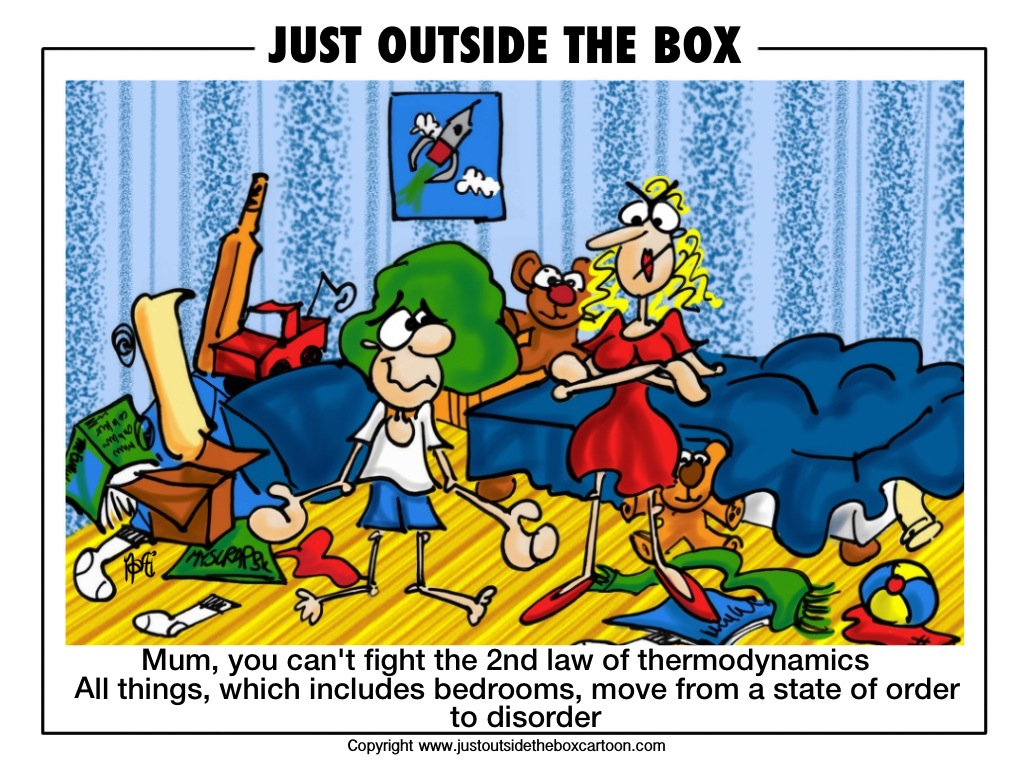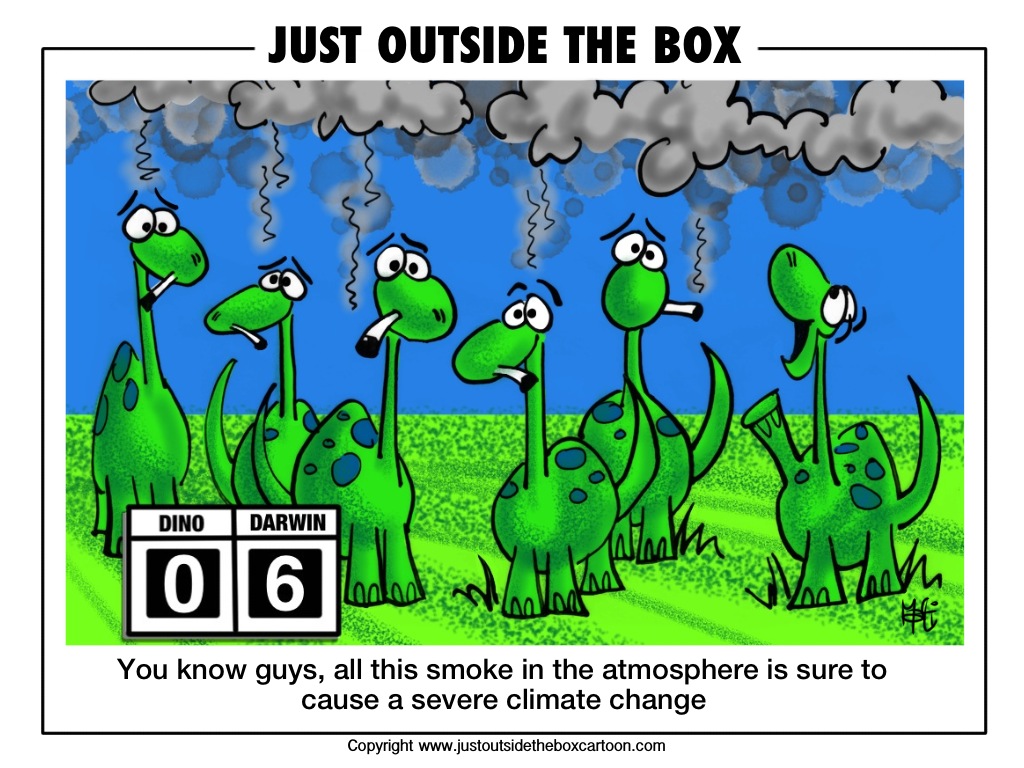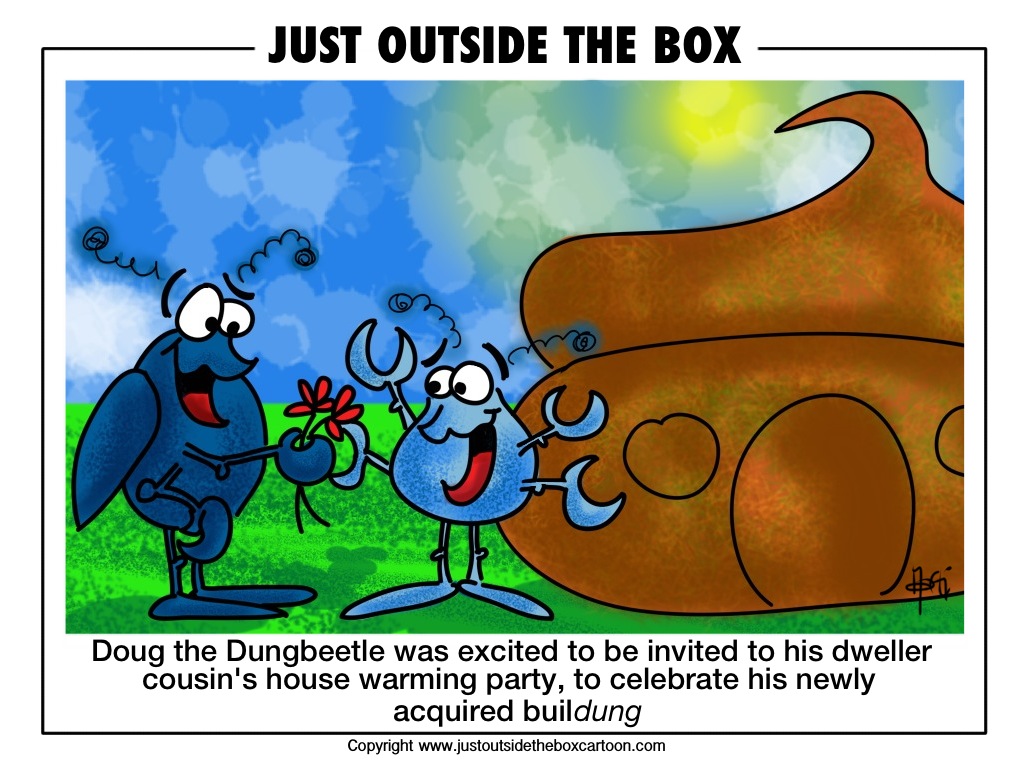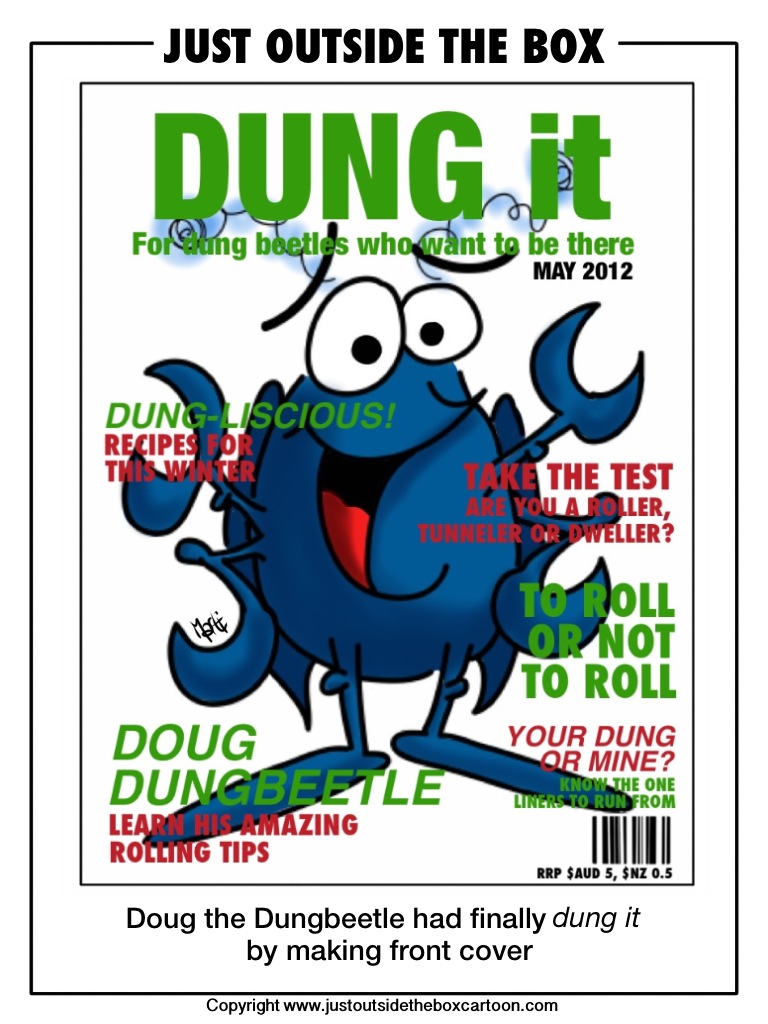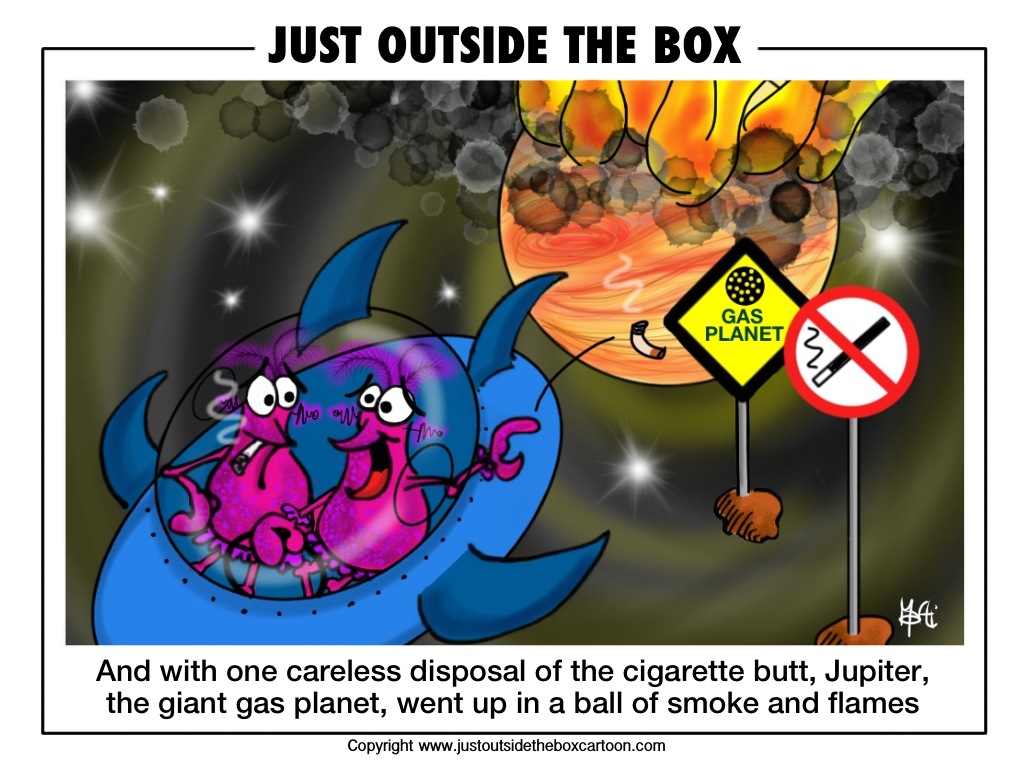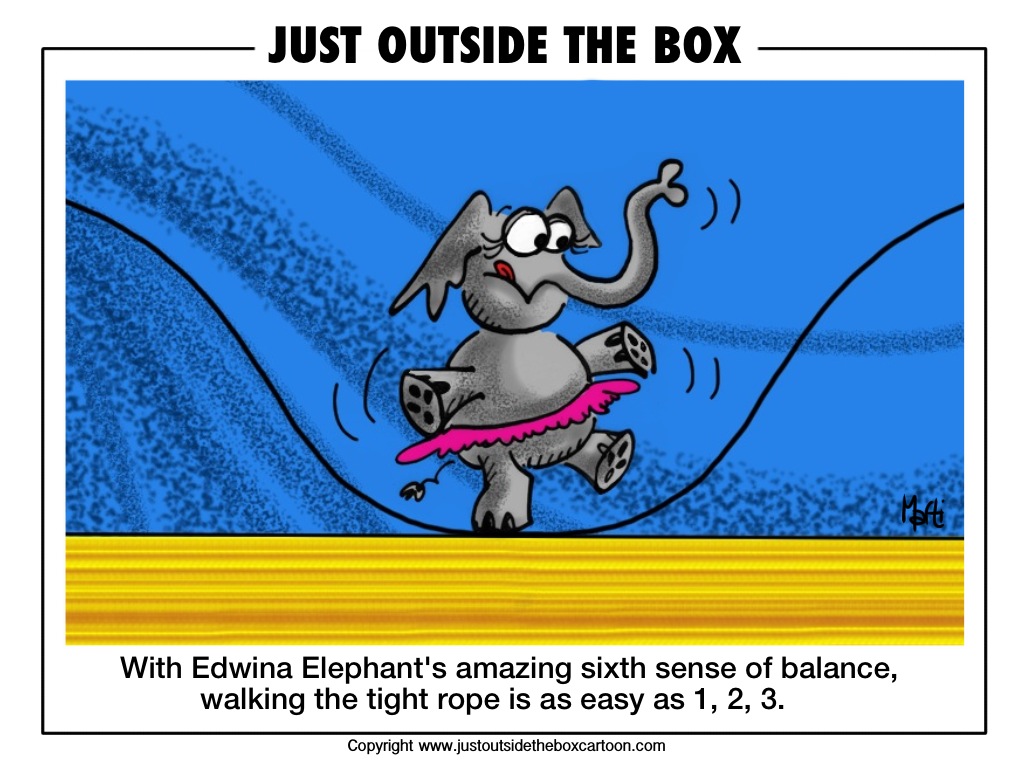Thanks to GD from GD Konstantine’s Blog for submitting this joke on the Submit a joke page
So a little lesson in the wonders of thermodynamics….Obviously you are hard-core, because your eyes have not glazed over and you are still reading.
To put it simply, it helps to mathematically explain why a system will change from ordered to disordered over time. The theory introduced the property known as entropy, which is used to explain the ‘amount’ of order.
The theory unfolded in the 1800s when scientists were trying to understand the maths around fluid dynamics – specifically to help engineers improve the efficiency of steam exchangers (such as old steam trains!) However, it has found application in physics and helps explain why ultimately everything (including the universe) will move from a state of order (low entropy) to disorder (high entropy).
My explanation is no where near as elegant as that of Professor Brian Cox. For a succinct explanation (using a sandcastle!) watch this 2 minute video, taken from one of my all time favourite top 3 documentaries ever – The Wonders of the Universe
My thanks need to go to Mark from Australian Migration – This was his contribution to one of the possible reasons for the ultimate demise of those cute, green dinosaurs. If you have a theory, why not submit a joke on the Submit a joke page and I’ll have a crack at drawing it. I’m targeting 50:0!
You might recall an earlier Doug Dung Beetle post which explained that there are 3 types of dungs beetles – roller (Doug), tunneller and dweller (Doug’s cousin). Well for a bit of Friday fun, I thought it was time to have another poll. Tell us what you think – just click your choice, then hit the vote button – easy!
[polldaddy poll=6214557]
Yes, this might look familiar to some. It made its debut appearance in the March Freebie.
What? You missed the March Friday Freebie – well don’t worry, here’s the link again. And while you’re at it, how about giving the Freebie page a rating? Feel free to give it a 5 star stellar rating!
While drawing this cartoon I was reminded of my favourite cartoonist as a child – Jeff Hook. His cartoons appeared daily in the local newspaper and were topical and political – not that I was interested in that part. It was having to find that teeny-weeny little hook he always hid in his cartoons. Our school teacher used to cut it out from the paper and stick it in a scrap-book for us all to look at daily. He still works too (born 1928), but officially retired. You can see his old and new cartoons by checking out his website
What – you haven’t heard of the latest competition?
Well, if you’re feeling funny (funny as in ha, ha, not strange), have a go at the May cartoon caption competition
It was time for some new aliens – evil ones – dressed is hot pink with bright purple feathers and a cigarette hanging half out their mouth.
And did you know Jupiter is a giant gas planet? I used to think all planets were just giant rocks, some with water if you were lucky like earth. Jupiter is made up predominantly of hydrogen (about 90%) and helium (9%) with a few sprinklings of some other elements.
And for those scientifically minded people out there, I know there are some errors in science within the making of this cartoon, but hey, that’s what’s great cartooning is all about – bending of the truth!
So, here’s the puzzle for the day. I can think of 2 obvious scientific errors – can you guess what they are? (I’ll post the answer, next time I post the adventures of these two new characters)
I remembered being taught about the 5 senses at school. I was surprised to discover that in the mean time scientists have added another 5 to the list.
- Balance and acceleration
- Temperature
- Kinesthetic sense
- Pain
- Other internal senses – a sense which is stimulated within the body
- Electroreception – able to detect electric fields (some fish, sharks and dolphins)
- Magnetoception – able to detect direction using the earth’s magnetic field (typically observed in birds – so that’s how migratory birds do it!)
- Pressure detection – within the gas bladder organ of a fish to help it regulate buoyancy
- Current detection – enables fish to navigate, hunt and hang around in schools
- Polarized light direction – an orientation ability found in bees, helping them to navigate on cloudy days
- Slit sensillae – enables a spider to detect mechanical strain in the exoskeleton, helping them to sense force and vibration
Check out Wiki for definitions and examples

